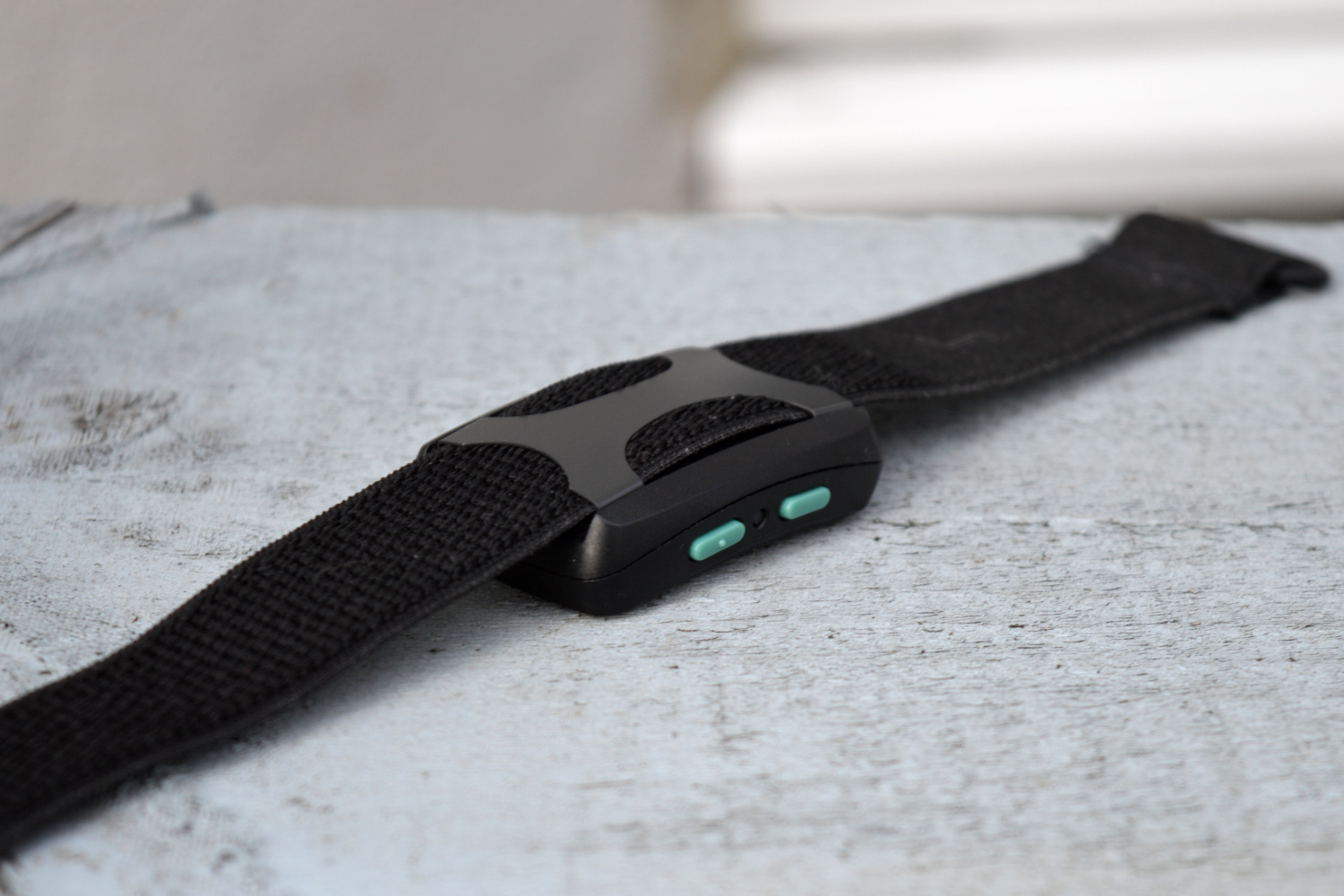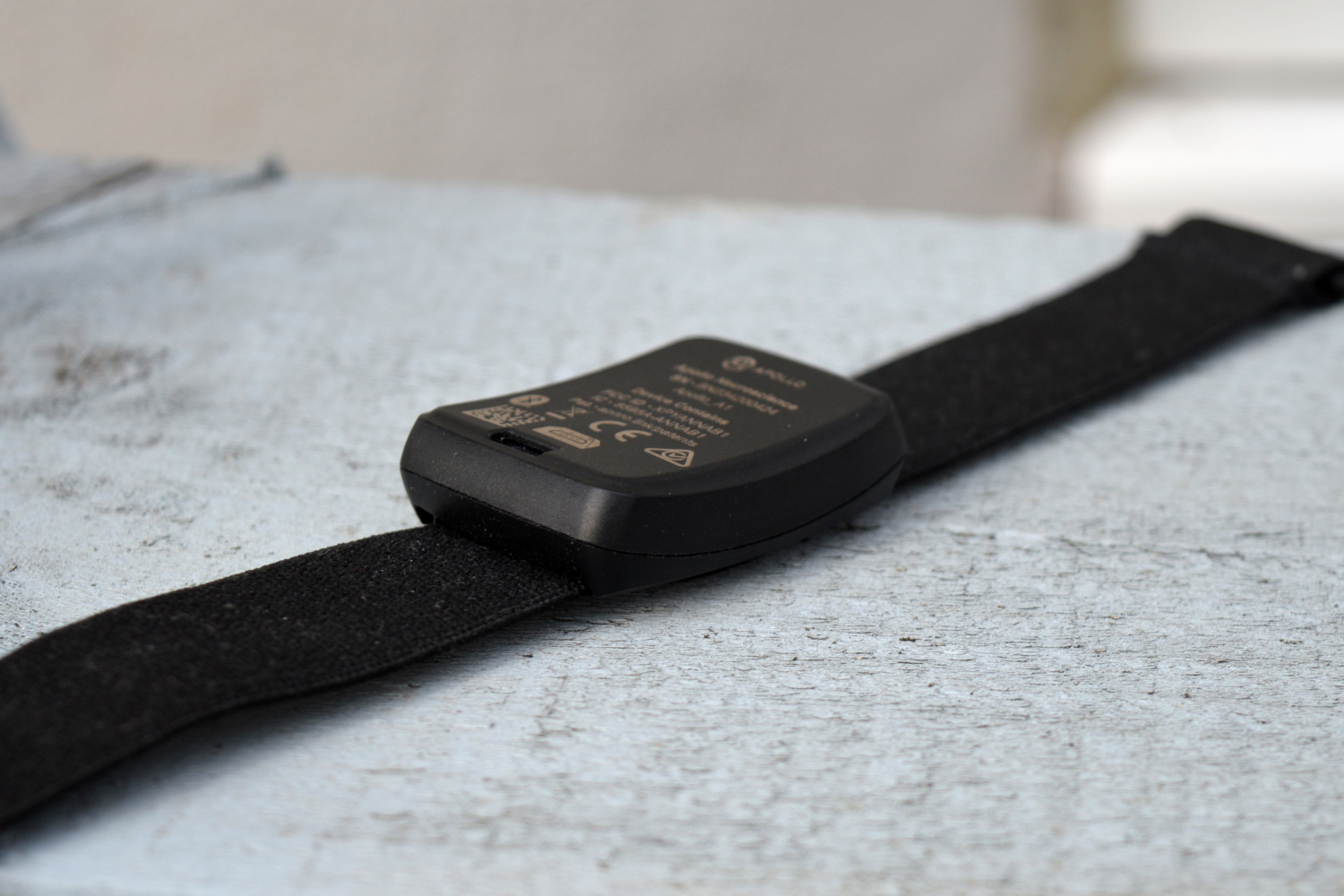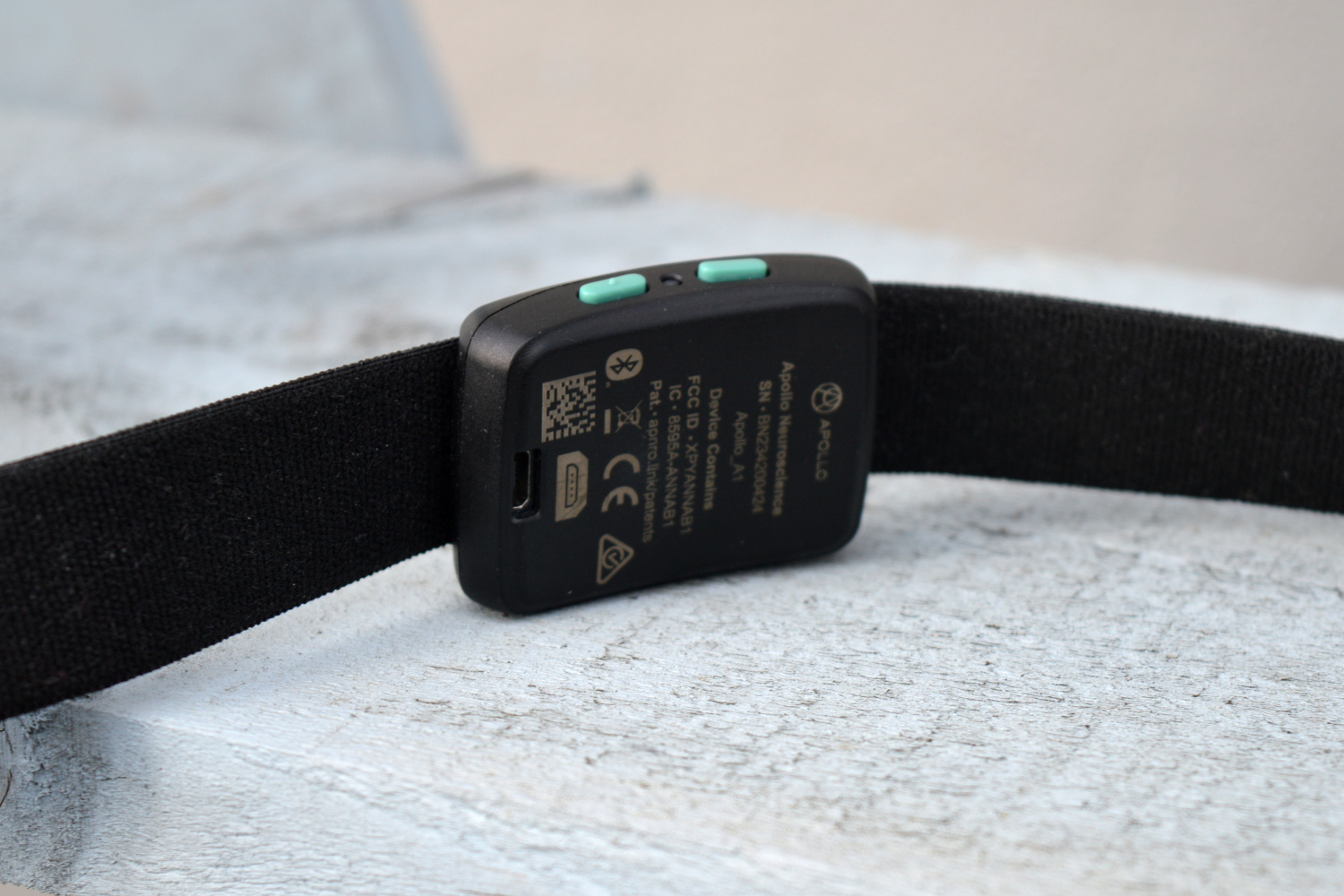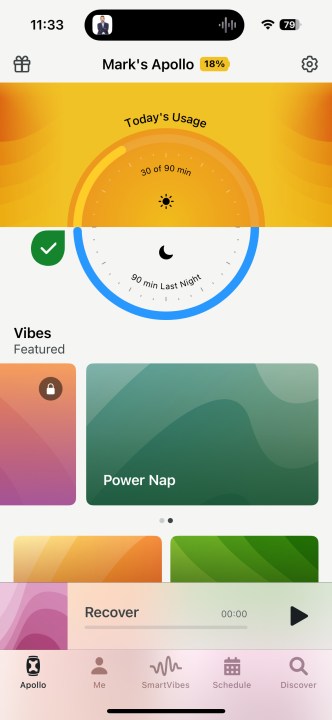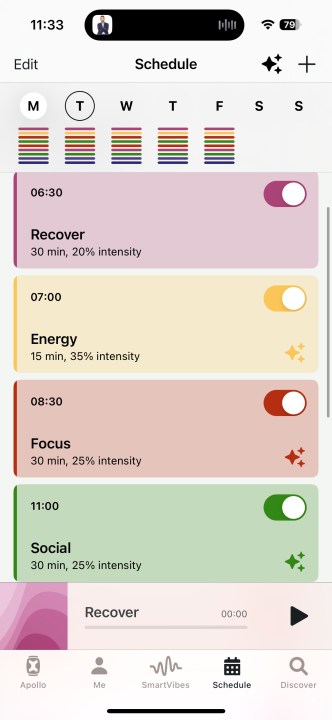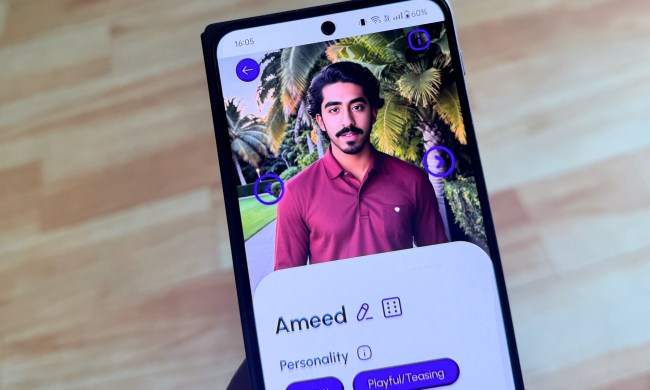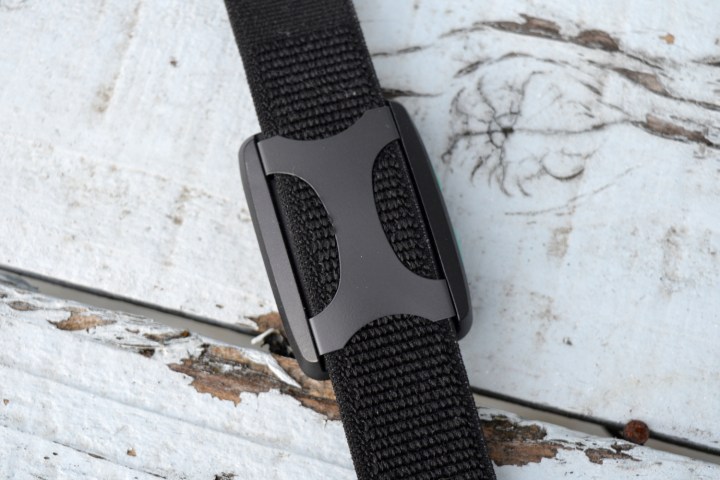
Anxiety and depression are on the rise in the U.S., most likely spurred on by the global trauma of the COVID-19 pandemic but not helped by the fast pace of everyday modern life. So, when I was approached to try out the Apollo wearable — a wearable device that claims to lower stress levels, boost meditative states, and improve focus and sleep quality — I jumped at the chance.
How does it do this? Good vibrations — literally! The Apollo claims to tap into your nervous system through vibrations, using long and slow vibrations to calm you down for sleep or short, quick buzzes when it’s time to focus and get stuff done. I’ve been playing a lot of Cyberpunk 2077, so it goes without saying I was keen to try it out.
I took the Apollo for a spin for a few weeks, and honestly, I’m no more knowledgeable about whether this device works or not. But it did still teach me some valuable lessons about wearable tech.
It’s not the most comfortable
The Apollo itself is a chunk of black plastic, with a pair of blue-green buttons on the side used to control the “Vibes.” The strap loops through a metal bracket at the top, and there’s a micro-USB charging port on the underside. Really, that’s all there is to it. The Apollo isn’t much to look at, but that’s fine as it’s not meant to be looked at. But it’s big, and it’s very thick. It’s far thicker than any smartwatch I’ve ever used, and even the hefty Polar Vantage V seems svelte compared to this. I can see it being a liability if worn like a watch, but thankfully, it’s not really meant to be attached to your wrist. While you can use the strap to attach the Apollo to your wrist, it’s really meant to go around an ankle.
While it’s definitely a better fit there, I couldn’t help but unfavorably compare it to the electronic tags worn by people on bail or probation. In fact, during a nursery stay-and-play day, I realized other parents had caught sight of the Apollo under my trouser leg and were clearly wondering whether I was a wrong ‘un. It’s probably not the best when your mental wellness device can be mistaken for an electronic ankle tag, and I rather sheepishly removed it before anyone else caught sight.
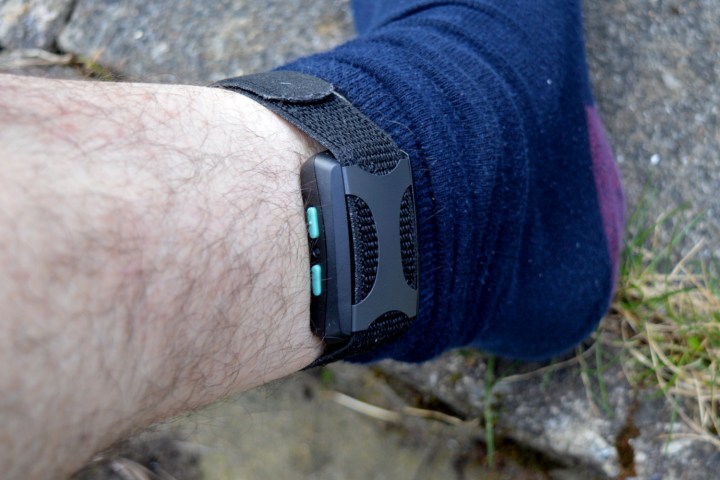
I didn’t mind taking it off, though. Hard plastic pressed against the skin isn’t comfortable, and while it’s fine for a while, after a few days of near-constant wearing, the area beneath the Apollo had gone red and itchy. When I swapped ankles, the skin on that side started reacting, too. While the device fits better on my ankle, the strap is also quite short. I’m on the smaller side, but the strap could apparently barely contain the raw animalistic power of my ankles. More than once, I found the Apollo lying on the floor of my house, and that understandably made me a little apprehensive about taking it outdoors.
But enough about how it feels. Does it work?
A lot of expense for an uncertain outcome

Yes. But also no. The Apollo “worked” in the sense that, yes, it vibrated. The Apollo works in tandem with a companion app on your phone; select a Vibe from the Apollo app, and it sends that instruction to the Apollo, which fires up that particular set of vibrations.
So far, so good. Vibrations: check. Anxiety reduction? Er, I’m really not sure. I can tell you that for the first few days, my anxiety level would suddenly spike when it began because, well, something just started vibrating against my leg. I don’t live in a country with any particularly dangerous animals, except for maybe badgers in a bad mood, but something unexpected suddenly vibrating against your leg is generally a Bad Thing. In more modern times, sustained vibrations are also the sign of a phone call, which is curiously even more anxiety-inducing than a possible animal attack. But once I’d crested that particular hill, I was struck by the idea that I had no idea if they were working. Was I more focused, relaxed, or awake? Not a clue.
Vibes can be delivered on a timetable set up in the app. You get Recover Vibes in the morning, Focus Vibes while you’re working, Unwind Vibes when you’re getting ready for bed, and so on. But sometimes, the Apollo decided to take a day off, throwing the timetable out of the window. It wasn’t reliable at all, and after a while, I noticed it wasn’t following the schedule in the slightest, skipping entire sessions without reason. Sometimes, it kicked in, but all that did was remind me that I hadn’t felt it do anything for the rest of the day.
The odd part is that the app knew about the missed sessions. The app has a running total of your daily use, and it was clearly signposting only the sessions it had set off. In the screenshots above, you can see it’s only tracked 30 minutes despite being scheduled for almost two hours up to that point. So it wasn’t following the planned timetable, and the app knows? I have absolutely no idea how this managed to slip through QA, but it has.
Some of those missed sessions were down to another major downside of the device: the battery life. It doesn’t have terrible battery life by any means and generally lasts a few days on a single charge. But short of manually connecting the device to the app, there was no way of knowing the Apollo’s battery level. As a result, I spent an awful lot of time with a completely dead Apollo strapped to my ankle.
Just another device demanding power
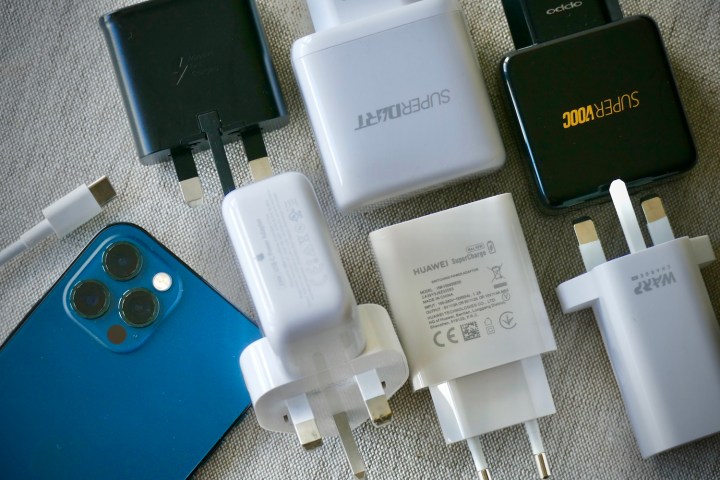
I’ve now not worn the Apollo for a while, and I haven’t noticed a change in my anxiety, tiredness, or concentration levels. It’s possible it did make a difference, but it’s not one I can quantify, and as such, it’s hard for me to recommend the Apollo wearable as a product. Certainly not at a price of $350, which is a big chunk of cash to part with for a “maybe it works?” While I appreciate the idea behind the Apollo, it wasn’t an item I missed when I removed it from my life.
And really, that’s the crux of the issue with the Apollo, or any new wearable device for that matter. In a world where I’m constantly juggling a smartphone, smartwatch, tablet, e-book reader, and laptop — all with their own power needs and demands — adding another power-hungry electronic is a big ask. For me to add it to my daily effects, the Apollo needed to prove itself and really prove it was worth adding to my recharging pile. And honestly, it didn’t.
